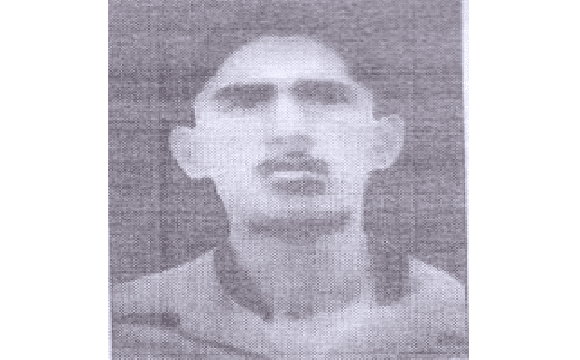
Service No : 4133423
Place of birth : Bhiwani, (Har)
Service : Army
Last Rank : Sepoy
Unit : 13 Kumaon
Arm/Regt : The Kumaon Regiment
Operation : Indo-China War 1962
Martyrdom : November 18, 1962
Sepoy Duli Chand
Sepoy Duli Chand hailed from Bhageshwari village in Dadri Tehsil in Bhiwani District of Haryana—a region renowned for its rich military heritage and steadfast contribution to national service. Motivated by a deep sense of patriotism and duty, he joined the 13 Kumaon Battalion of the Kumaon Regiment, one of the Indian Army’s most historic and esteemed infantry units. With its origins tracing back to the 18th century, the Kumaon Regiment has built a distinguished legacy of gallantry, professionalism, and exemplary service across various military operations.
During his tenure in the Army, Sepoy Duli Chand exemplified discipline, dedication, and an unwavering commitment to his responsibilities. He wore the Kumaoni uniform with pride and consistently upheld the regiment’s core values and traditions. By 1962, his unit was stationed in Ambala and subsequently deployed to Jammu & Kashmir—a reflection of the high level of trust in their operational readiness and strategic importance.
Battle of Rezang La (Indo-China War): 18 Nov 1962
In June 1962, Sepoy Duli Chand’s unit—the 13 Kumaon Battalion, commanded by Lt Col H.S. Dhingra—was relocated from Ambala to Baramulla in Jammu & Kashmir, amidst growing tensions along the Indo-China border. By September, the situation had further deteriorated, prompting urgent orders for the battalion to move to Leh. Upon arrival, 13 Kumaon was placed under the operational control of the 114th Infantry Brigade, led by Brigadier T.N. Raina, who would later serve as the Chief of Army Staff. The brigade was entrusted with the critical task of defending nearly 400 kilometers of the Indo-China frontier, including the strategically important Chushul sector. The 114 Infantry Brigade comprised five battalions: 13 Kumaon, 14 J&K Militia, 7 J&K Militia, 5 Jat, and 1/8 Gorkha Rifles. Sepoy Duli Chand served in ‘C’ Company (Charlie Company) of 13 Kumaon, under the command of the legendary Major Shaitan Singh. As part of the brigade’s defensive strategy, Charlie Company was deployed at Rezang La—a key mountain pass controlling access to Chushul. Alpha Company, led by Major G.N. Sinha, was held in reserve near battalion headquarters on high ground, while Bravo and Delta Companies, under Captain R.V. Jatar, were stationed along Maggar Hill between Spanggur Gap and Rezang La.
By 26 October 1962, Sepoy Duli Chand and his comrades had fortified their positions at Rezang La, taking into account the difficult terrain and likely enemy approach routes. The forward defenses were manned by three platoons: Platoon 7, commanded by Jemadar Surja Ram, secured the northern flank; Platoon 8, led by Jemadar Hari Ram, held the central pass; and Platoon 9, under Jemadar Ram Chander, was positioned near Company Headquarters. A mortar section, under Naik Ram Kumar Yadav, was strategically located on the reverse slope to provide fire support. On 18 November 1962, the Chinese launched a massive two-pronged offensive—one targeting Gurung Hill and the other aimed directly at Rezang La. This assault coincided with their broader attack on Sela in the Northeast Frontier Agency (now Arunachal Pradesh). Rezang La, located approximately 11 km south of Spanggur Gap, was a position of immense tactical significance as it overlooked the only road connecting Leh via Dungti—the critical supply route for Indian forces at Chushul.
The first enemy assault began at around 2:00 AM, approaching from the direction of Platoon 8. A column of about 30 Chinese soldiers was spotted by the platoon’s Listening Post (LP). Naik Hukam Chand of Section-1 quickly alerted Jemadar Hari Ram, who immediately passed the information to Major Shaitan Singh and ordered a Light Machine Gun (LMG) detachment into position. As the enemy closed to within 50 yards, Naik Hukam Chand gave the order to open fire, successfully repelling the first wave. A second attack followed at 4:00 AM, this time targeting Platoon 7. Jemadar Surja Ram swiftly redeployed Section-Three and launched a fierce counterattack with rifles, LMGs, and grenades. This assault was also beaten back, thanks to the leadership of Jemadar Surja Ram and the courage of Naik Sahi Ram and his men. However, the Chinese persisted, launching the third, fourth, and fifth waves at 4:55 AM, 6:00 AM, and 6:30 AM, respectively. Each assault was met with fierce resistance, but the defenders suffered heavy casualties and growing pressure on their limited ammunition and supplies. By 7:40 AM, during the sixth wave, Sepoy Duli Chand and his comrades were engaged in an intense and desperate defense. The Chinese then introduced a 57 mm recoilless rifle at 8:40 AM, placing it on a ridge in full view to maximize destruction. The seventh and final assault commenced at 9:00 AM.
Amidst freezing temperatures, relentless enemy fire, and superior firepower, Sepoy Duli Chand displayed extraordinary courage. Though severely wounded, he continued to fight until he laid down his life in the line of duty. The men of Charlie Company fought to the last man and the last bullet, ensuring that the Chinese advance towards the Chushul airfield was decisively stalled. Following the ceasefire, Rezang La fell into a disputed no-man’s land. Nearly three months later, a local shepherd discovered the frozen bodies of Sepoy Duli Chand and his fellow soldiers—still in their positions, their weapons beside them. Their selfless sacrifice at Rezang La remains one of the most gallant chapters in the annals of Indian military history.
Sepoy Duli Chand is survived by his wife, Smt Tripati Devi.

No Comments